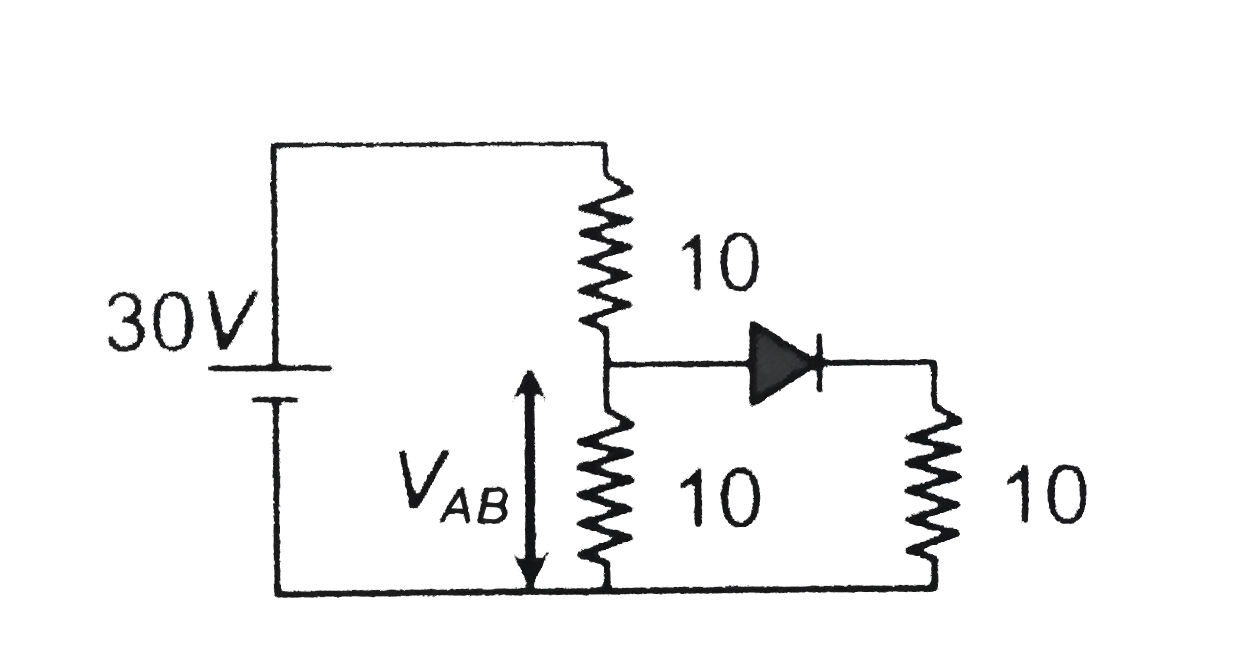Assertion: Two P−N junction diodes placed back to back, will work as a NPN transistor.
Reason: The P−N junction of two PN junction diodes back to back will form the base of NPN transistor. Solution in Gujrati
Statetment-I is True, Statement-II is True , Statement-II is a correct explanation for Statement-I
Statement-I is True, Statement-II is True , Statement-II is NOT a correct explanation for Statement-I
Statement-I is True, Statement-II is False
Statement-I is False, Statement-II is True
The correct Answer is:A
Step by step video & image solution for Assertion: Two P-N junction diodes placed back to back, will work as a NPN transistor. Reason: The P-N junction of two PN junction diodes back to back will form the base of NPN transistor. by Physics experts to help you in doubts & scoring excellent marks in Class 11 exams.
Updated on:21/07/2023Topper's Solved these Questions
- SEMICONDUCTORSBOOK - ALLEN CHAPTER - SEMICONDUCTORSEXERCISE - Part-3(Exercise-4)
50 Videos
- SEMICONDUCTORSBOOK - ALLEN CHAPTER - SEMICONDUCTORSEXERCISE - Part-3(Exercise-2)
49 Videos
- PHYSICAL WORLD, UNITS AND DIMENSIONS & ERRORS IN MEASUREMENT BOOK - ALLEN CHAPTER - PHYSICAL WORLD, UNITS AND DIMENSIONS & ERRORS IN MEASUREMENT EXERCISE - EXERCISE-IV
7 Videos
- WAVES AND OSCILLATIONSBOOK - ALLEN CHAPTER - WAVES AND OSCILLATIONSEXERCISE - Part-1(Exercise-05)[B]
42 Videos
Similar Questions
At absolute zero temperature Si acts as ……..
View SolutionFind VAB

View SolutionAssertion : Gravitational forces do not depend on the medium between the masses.
Reason : Mediating particle responsible for gravitational force is graviton.
View SolutionA string of length 0.4m and mass 10−2kg is clamped at one end . The tension in the string is 1.6N. The identical wave pulses are generated at the free end after regular interval of time , Δt . The minimum value of Δt , so that a constructive interference takes place between successive pulses is
View SolutionAssertion: Two P-N junction diodes placed back to back, will work as a NPN transistor. Reason: The P-N junction of two PN junction diodes back to back will form the base of NPN transistor.
View SolutionCan two p-n junction diodes placed back to back work as a p-n-n transistor?
View SolutionAssertion : Two p-n junction diodes placed back to back, will work as a n-p-n transistor. Reason: The p-region of two p-n junction diodes back to back will form the base of n-p-n transistor.
View SolutionCan two separate p-n junction diodes placed back to back be used to form a p-n-p transistor ?
View SolutionWhy two diodes connected back to back cannot behave as a transistor?
View SolutionA PNP transistor is like to …………. PN junction diodes placed back to - back .
View SolutionStatement : Two P - N junction diodes placed back to back work as a P - N - P transistor. Statement II : A transistor is current operated device while a triode value is a voltage operated device.
View SolutionCan two p-junction diodes placed back to back act as a p-n-p transistor ? If not, why ?
View Solutionप्रक्कथन : दो PN सन्धि डायोडों के P सिरों को सामने रखकर जोड़ने पर यह NPN ट्रॉजिस्टर की भाँति कार्य करेगा। कारण दो PN सन्धि डायोडों का P-क्षेत्र एक NPN ट्रॉजिस्टर के आधार की भाँति कार्य करेगा।
View Solutionनिर्देश : निम्न प्रश्न में, अभिकथन के वक्तव्य के बाद तर्क के वक्तव्य को दिया गया है। सही विकल्प पर निशान लगाइए।
अभिकथन: एक के पीछे एक (Back to back) रखे दो p-n संधि डायोड, n-p-n ट्रांजिस्टर की भांति कार्य करेंगे।
तर्कः एक के पीछे एक रखे हुए p-n संधि डायोडों का p-क्षेत्र n-p-n ट्रांजिस्टर के आधार को बनाएगा।
View Solutionएक n-p-n ट्रांजिस्टर सही रूप में कार्य करता है, जब
View Solution
